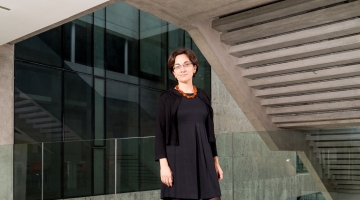
Where Knowledge is Born to Change the Rules
Beyond Chaos
From pendulums to the motion of planets, mathematical models can describe chaotic phenomena. But turbulence has remained an enigma, challenging scientists and physicists for centuries. MIND attempts to address this age-old problem with new tools
By Elia Brué
There are natural phenomena that for centuries have defied mathematicians’ ability to confine them into precise rules. The motion of a pendulum, the gravitational ballet of two planets, even chaos as described by Edward Lorenz: all have found, in different ways, a theoretical framework to describe them. But turbulence has not. It is an enigma that endures, capable of shaking up consolidated models and challenging even equations that we consider "fundamental." It is no coincidence that Richard Feynman called it "the most important unsolved problem of classical physics."
It this unstable and fascinating territory that is explored by MIND – Mathematical Insights into Dynamics of Incompressible Turbulence, a project funded by the European Research Council, to study mathematical models of turbulence and understand its deeper mechanisms.
There are "predictable" systems, called integrable systems, in which the dynamics can be resolved with mathematical precision and expressed through formulas. In these cases, knowing the initial state, even with a small error, is sufficient to reconstruct a faithful approximation of the entire evolution process. Two classic examples: the motion of an ideal pendulum, perfectly described with trigonometry; and the dynamics of two celestial bodies, such as the Earth and the Sun, already understood by Kepler and Newton.
At the other extreme, we find chaos, studied in depth in recent decades and now equipped with a solid mathematical framework. In chaotic systems, even if they are deterministic, evolution appears increasingly complex as time passes. A small change in the initial conditions is amplified, typically with exponential growth. As Lorenz put it: "When the present determines the future, but the approximate present does not approximately determine the future." One of the simplest models of this type is the logistic model, which describes population growth.
Turbulence is not chaos: it goes beyond that. In the models that describe it, the mathematical structure tends to degenerate instantly. Equations can be poorly posed, solutions non-unique and irregular. Amplification of the initial error can become infinite in an instant. Yet, in this apparent absence of rules, universal laws emerge, as observed in experiments and simulations which still elude rigorous understanding.
The best-known examples come from fluid dynamics, the testing ground of contemporary mathematics. In the 18th century, Leonhard Euler deduced the equations for the motion of an ideal, frictionless fluid. In the 19th century, Claude-Louis Navier and George Gabriel Stokes wrote differential equations for viscous fluids, which today bear their names and are fundamental to meteorology, engineering and environmental science. Yet, centuries later, their theoretical understanding remains limited. For the Navier–Stokes equations in three dimensions, we don't even know whether regular solutions always exist: it is one of the six famous Millennium Prize Problems listed by the Clay Mathematics Institute, awarding its solver with a prize of one million dollars. So far, of the six problems only the Poincaré conjecture has found a complete solution, thanks to Grigori Perelman.
Based on these same equations, in 1941 Andrei Kolmogorov proposed the phenomenological theory K41, which describes the transfer of energy from large to small scales and certain universal statistical laws. Phenomena such as anomalous dissipation and the zeroth law of turbulence are the founding pillars. More than 80 years later, these predictions remain without rigorous mathematical proof. In 1949, Lars Onsager instead intuited that, under certain regimes, the solutions to Euler’s equations could violate the principle of the conservation of energy: a visionary prediction, confirmed only recently thanks to the convex integration technique introduced by Camillo De Lellis and László Székelyhidi.
It is astonishing that, faced with such a wealth of phenomena and insights, there is still no mathematics capable of comprising them into a general theory.
MIND analyzes these scenarios by studying fundamental mathematical models. Turbulence forces us to consider regimes in which standard techniques are inapplicable and classical results do not hold. To address them, it is necessary to develop new tools, with potential implications beyond the specific problem studied. At the same time, the goal is to better understand the Euler’s and Navier–Stokes equations, which centuries after their formulation continue to present unresolved questions.
Understanding turbulence is not just about solving a mathematical puzzle, but paving the way for concrete progress in fields that affect everyone's lives: from more reliable meteorology to better energy and aircraft design, to the protection of the environment and the management of flows in future cities.






